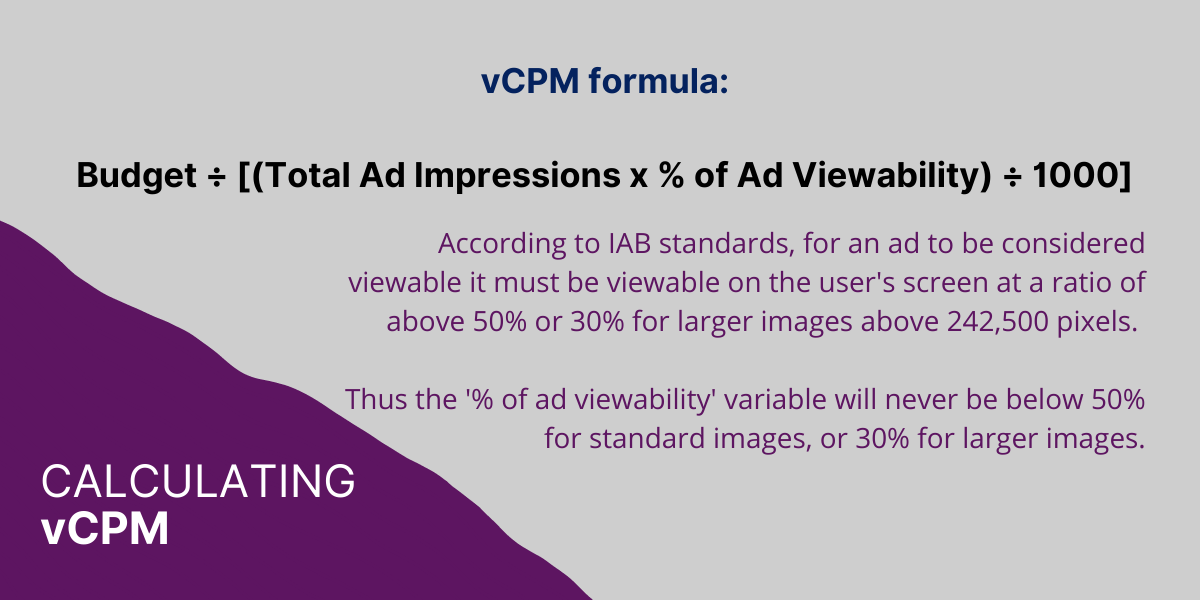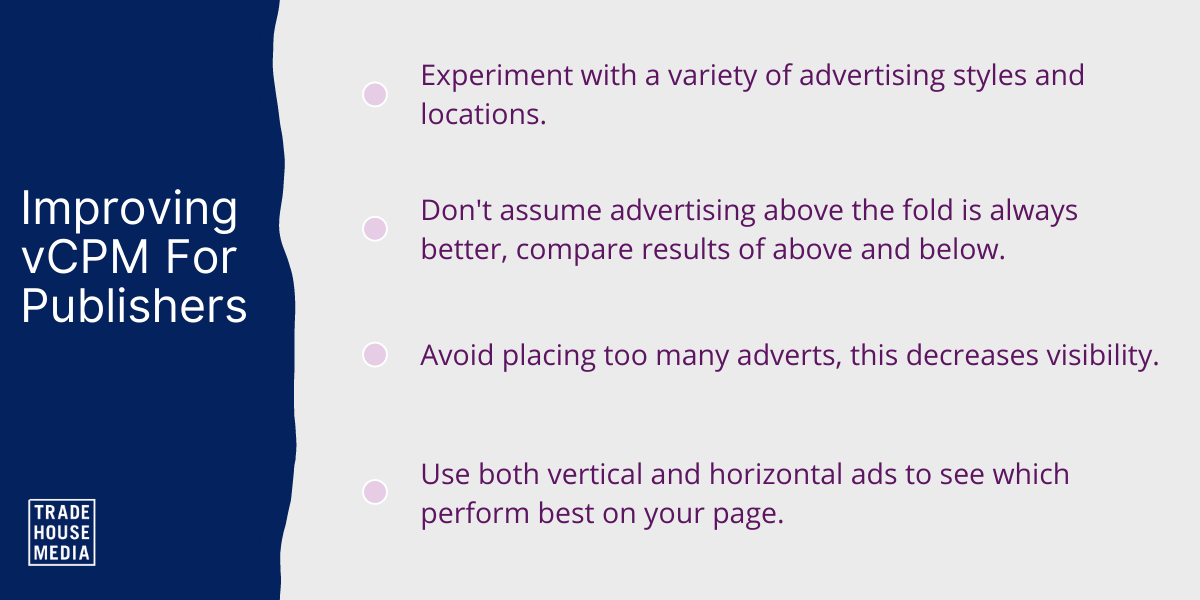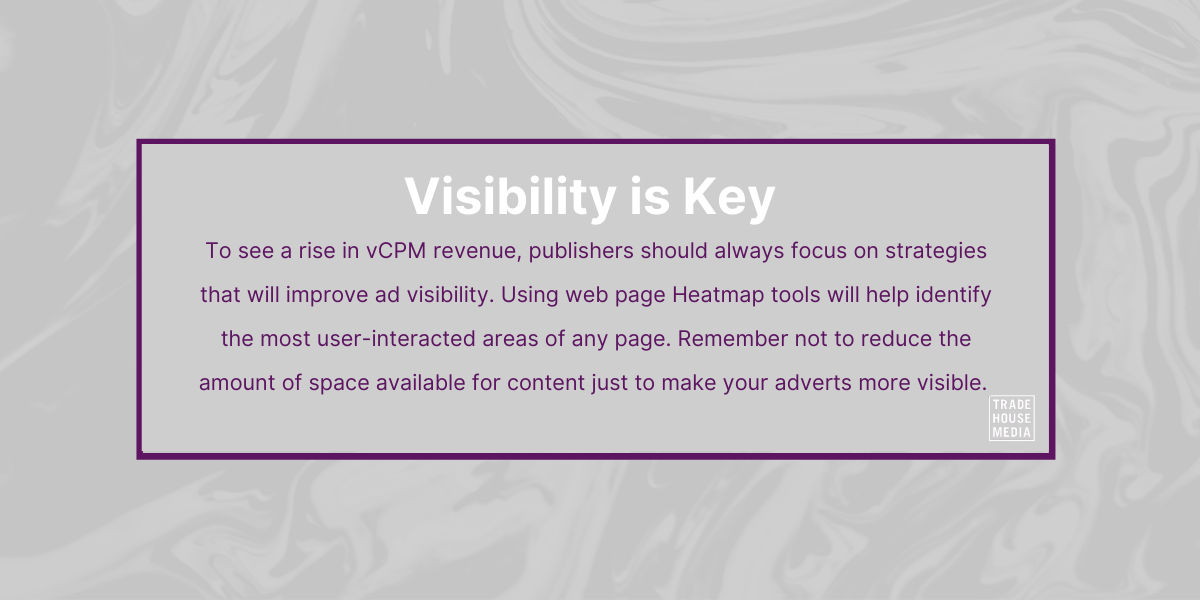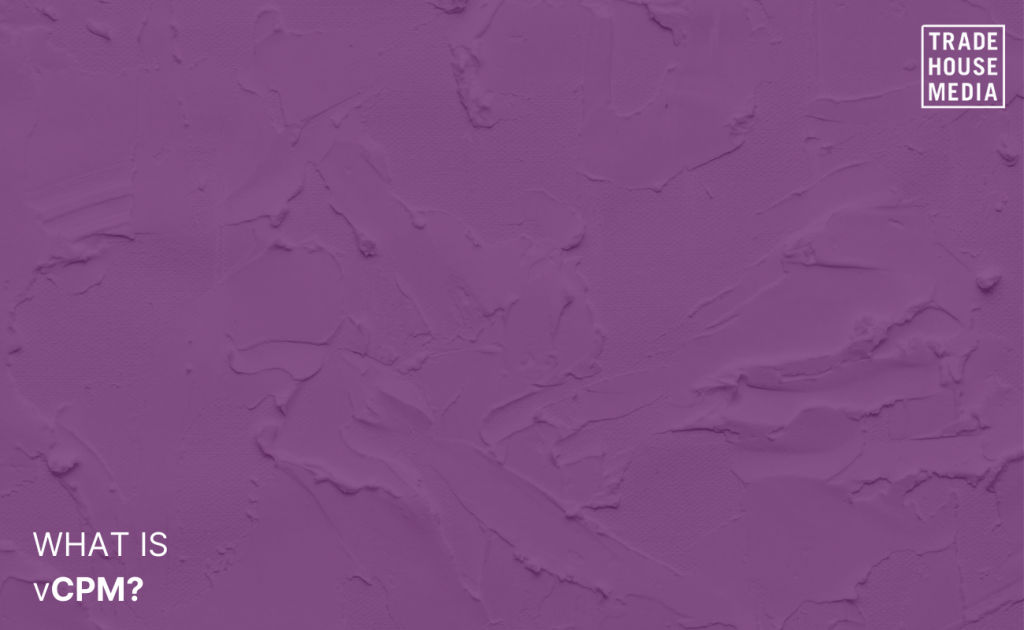vCPM is an advertising pricing model that measures how often users view an ad on a page rather than how many users see the whole website. It is a more detailed metric that changes the way publishers can earn revenue for placing ads on their websites. Compared to standard CPM shaped via the frequency of the impressions, vCPM will be determined by how often the ad is actually viewed.
So, how to calculate vCPM? Is there a vCPM formula? In this article, we will outline the equations involved in developing your business’s vCPM, what constitutes a view, and why this metric might be preferred depending on your business’s goals.
What Does vCPM Stand For?
vCPM stands for Viewable Cost Per Mille. The addition of the ‘viewable’ metric opens the final outcome to separate guidelines outlined by the Media Rating Council (MRC) and the Interactive Advertising Bureau. To establish a chargeable ‘view,’ the ad must be:
- Viewable on the user’s screen at a ratio of 50% and for longer than a second
- For larger ads, that is, 242,500 pixels and above, users need to see 30% of the ad and for longer than one second.
- If presented as a video, also viewable by more than 50% and for longer than two seconds.
Utilising the viewable impressions model is an increasingly favourable system for advertisers. Ads that are not positioned constructively by the web host and subsequently aren’t seen by users will not be billed under a vCPM arrangement.
vCPM vs CPM
CPM (cost per mille, or per thousand impressions) is a metric often confused with vCPM. The critical difference is that CPM is charged based on ads that appear on a webpage, and the advertiser will be charged each time the page is viewed one thousand times, despite whether the ad is considered viewable.
vCPM takes into consideration the viewable impressions, and an advertiser is only charged based on the viewable impressions as stipulated by the IAB and MRC guidelines mentioned above.
Advertisers will use the CPM model to pay for every advert to appear on a webpage. Ad viewability is fundamental to determining a campaign’s cost. Advertisers tasked with increasing brand recognition are more likely to engage with a vCPM model
How To Calculate vCPM
The vCPM formula advertisers will use is the following:
Budget ÷ [(Total Ad Impressions x % of Ad Viewability) ÷ 1000] = vCPM

So, for an example, let’s enter the following variables to work out vCPM:
- Ad Viewability = 65% (Above the 50% requirement to be considered viewable)
- Campaign Budget = £150,000
- CPM = £1.25 per click
- Total Impressions = 25,000,000
- Viewable Impressions = £12,500,000
- Max vCPM Bid = £9.00 (Another goal of the campaign)
Input these variables to the formula to get the following:
£150,000 ÷ [(25,000,000×0.65) ÷ 1000] = £9.23
The result shows that each viewable CPM is £9.23, since 65% of the ad is within the visual field for longer than 1 second, as outlined in the IAB standards.
What Does a High vCPM Mean?
As you can see from the calculation above, the result of £9.23 is slightly over the vCPM budget of £9, resulting in fewer ad impressions. The target is to lower the vCPM and increase the impressions to garner increased ROI.
Several formulas will give advertisers the same result for vCPM. The most productive way for a company to improve their ROI is by inputting different quantities into the equation side-by-side and seeing how the results fit into their campaign budget.
What Does vCPM Mean For Publishers?
The vCPM model has significant advantages for advertisers; for publishers, it means there needs to be a concentrated effort to improve web interfaces to accommodate ad layouts best. Publishers will face a more rigorous selection process by advertisers to choose websites that have high viewability rates to ensure their campaigns are optimised.
VCPM will not affect publishers on a CPC model. Still, those with an established CPM model will see a drop in revenue if the ads are poorly integrated into the web layout or the content isn’t engaging enough to maintain readers’ interest.
It is imperative for those looking to understand “what is vCPM?” Is that, like all performance metrics, vCPM should be evaluated relative to cost. Publishers may experience a drop in their revenue from advertising initially. However, in the future, encouraging efficient use of ad viewability metrics will lead to better ad positioning systems that benefit the entire ad ecosystem.

Factors Influencing Viewability
As advertisers shift towards paying for viewable impressions instead of delivered impressions, it is imperative to understand the influences affecting the viewability of your ad.
1. Page Position
Where the ad appears on the webpage increases the likelihood of it being seen. Often referred to as above or below the ‘fold’. Once, the most viewable position was considered just above the fold, not directly at the top or bottom of the page. However, this is now different from site to site, and some ads ‘below the fold’ are seeing increased visibility.
2. Size of the Ad
Just like where the ad lies on the page, how big the ad is will impact how visible it is to users and affect your vCPM result. The more viewable ad sizes are vertically shaped units as they follow the user as they scroll down a page.
3. Type of Publisher
Viewability averages are being affected by an oversized number of publishers. The viewability will be affected by the nature and traffic of the site it appears on.
4. Nature of the Industry
Different industries attract different viewability rates when it comes to the style of ads. Regarding vertical ads, reference content is more effective than other types like hobbies or leisure.

Wrapping Up: What is vCPM?
VCPM is a model that could save your campaign money. The introduction of this new technology to track viewable impressions give a far more accurate indication of how your campaigns perform. VCPM increases transparency between advertisers and publishers and leads to the development of more engaging content.
Publishers enter a more co-dependent relationship with advertisers by designing web layouts to best increase the visibility of ads on the page. Internet marketers are utilising vCPM over CPM streams to save significant amounts on advertising budgets by only paying for the times their ads are actually viewed.

